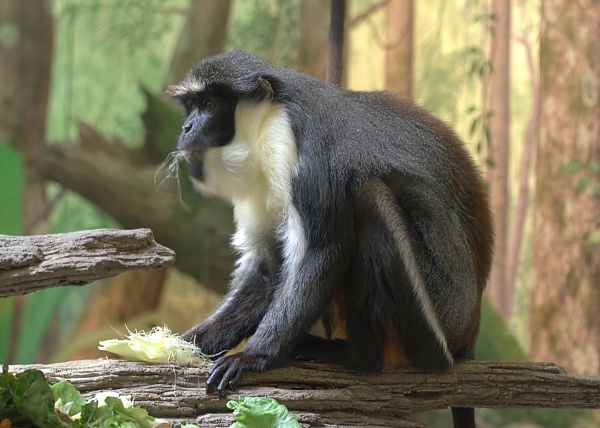Facts About Diana monkey
The Diana monkey is a fascinating member of the Old World monkey family, classified scientifically as Cercopithecoidea. With 148 species in this group, the Diana monkey distinguishes itself through its unique features and behaviors. Unfortunately, their population is under threat due to habitat destruction and hunting for bushmeat.
These monkeys typically inhabit primary forests. They measure between 40 to 55 cm in length and weigh around 4 to 7 kg. One of their most striking characteristics is their fur, primarily black or dark grey, with distinct white markings, including a crescent-shaped browband, throat, ruff, and beard. These white markings resemble a crescent moon, which is why they are named after the Roman goddess Diana.
Diana monkeys are diurnal, meaning they are active during the day. Their diet comprises a variety of fruits, insects, leaves, and invertebrates. Despite their agility and alertness, they still fall prey to various predators.
Communication is crucial for Diana monkeys, and they employ both visual signals and vocalizations to convey messages. Interestingly, female monkeys have specific calls to warn the group about different types of predators.
They live in social groups typically led by a single dominant male, accompanied by reproducing females and their offspring. The gestation period for a Diana monkey is about 5 months, and mothers nurse their infants for around 6 months. Typically, only one baby is born at a time, and juveniles reach sexual maturity at about 3 years old.
While Diana monkeys can carry diseases like yellow fever and tuberculosis, they are not major vectors of these illnesses. Nonetheless, their interactions with humans underscore the importance of understanding and protecting these captivating creatures.

 Guinea
Guinea